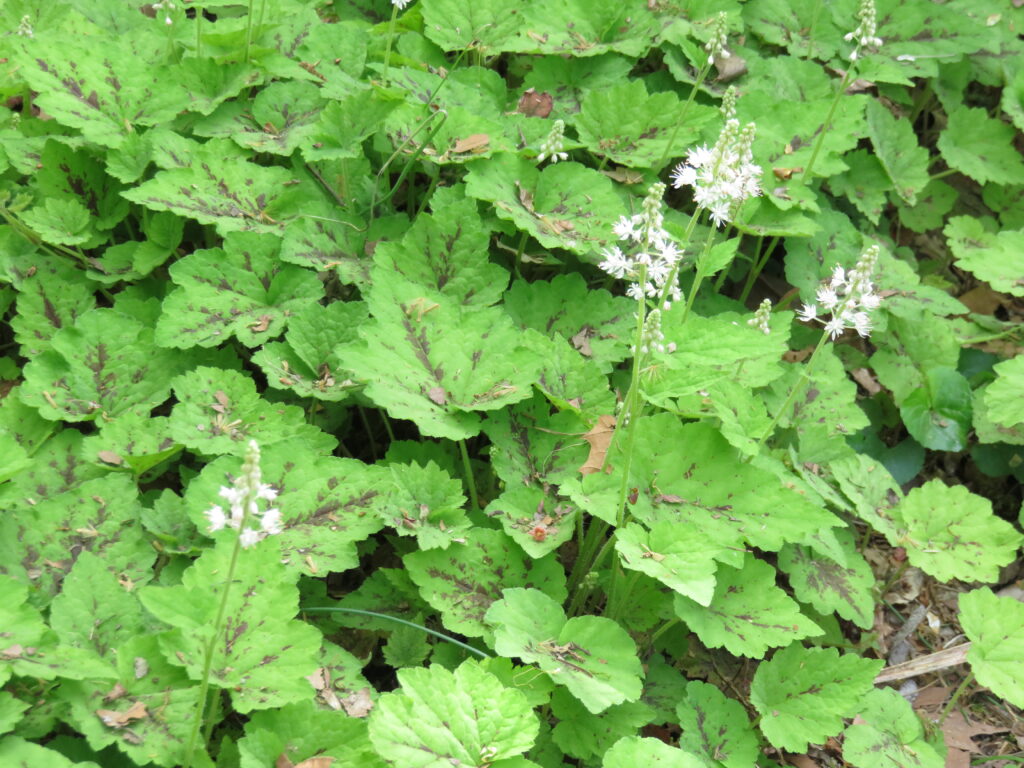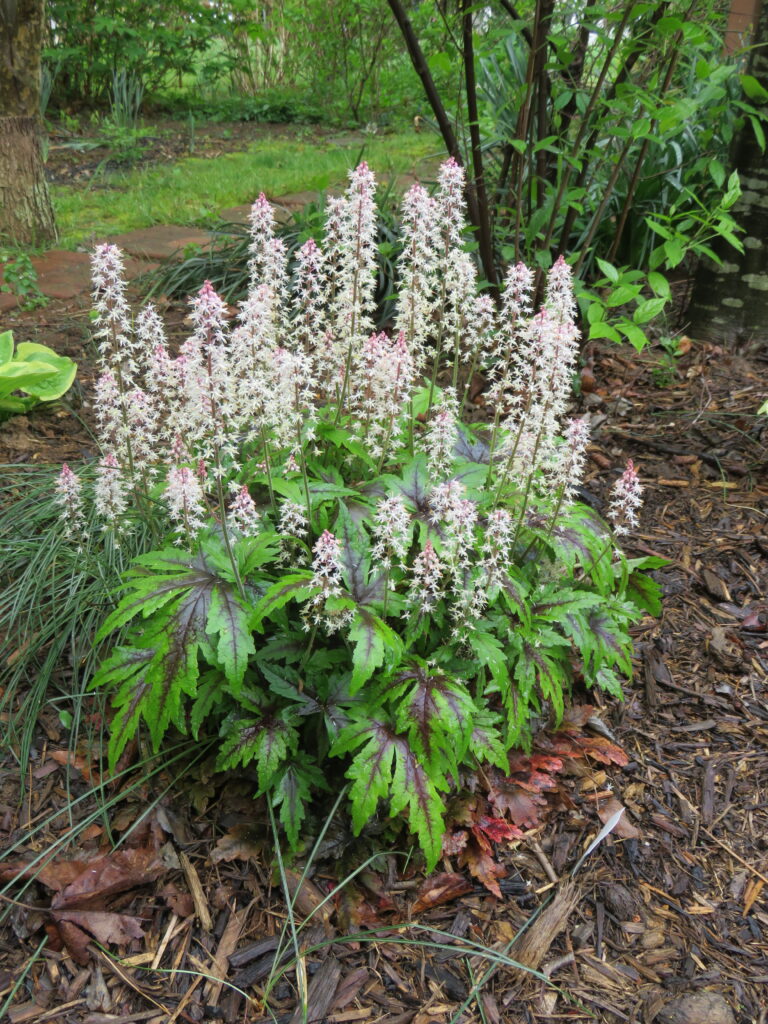
Foamflower (Tiarella cordifolia) is a low-growing, clump-forming woodland perennial groundcover. It grows naturally in moist forests, coves, and well-drained bottomlands where it spreads by slender runners (stolons) to form dense, 1-2 feet wide clumps of foliage or colonies. Small spikes of creamy white spring flowers and its attractive bright green foliage are solid pluses in a shady garden. (USDA hardiness zones 3-8).
Semi-glossy, heart-shaped, 3-5 lobed leaves (3-4 inches across) sprout directly from the stolons. Leaves may have reddish variegation along the veins. Foliage stays evergreen in mild winters, often taking on a reddish bronze tint in autumn and winter. Tiny, white flowers with very long “foamy -like” stamens appear in airy racemes in spring for 4-6 weeks; erect, wiry, mostly leafless floral stems stand tall above the foliage clump to a height of 10-12 inches. Flower buds start out pinkish before turning creamy white.
Foamflower is easily grown in average, medium, well-drained soil in part shade to full shade. It thrives in humus-rich, moist, well-drained soil. Poorly drained or dry soils can be fatal for this shade groundcover. Fertilizing is rarely necessary. Mow high over the spent flower spikes for a neat appearance to the foliage mound. It is semi-evergreen in zone 6 and points further south where tiarellas are evergreen in winter.
A southern variety (var. wherryi), sometimes listed as a separate species, does not send out runners and the deeply lobed leaves resemble oak foliage.
Landscape Attributes: An excellent ground cover for heavy shaded sites; airy white flowers attract early pollinating small bees and flies. The heart-shaped foliage is generally passed up by deer and rabbits. Plants offer minimal wildlife value providing food or cover.

Foamflower is a great for woodland gardens and planted as a groundcover nearby the shade of acidic-loving shrubs and trees such as azaleas (Rhododendron spp.), mountain laurels (Kalmia latifolia), woodland phlox (Phlox divaricata), and flowering dogwood (Cornus florida).

 Posted in
Posted in 
